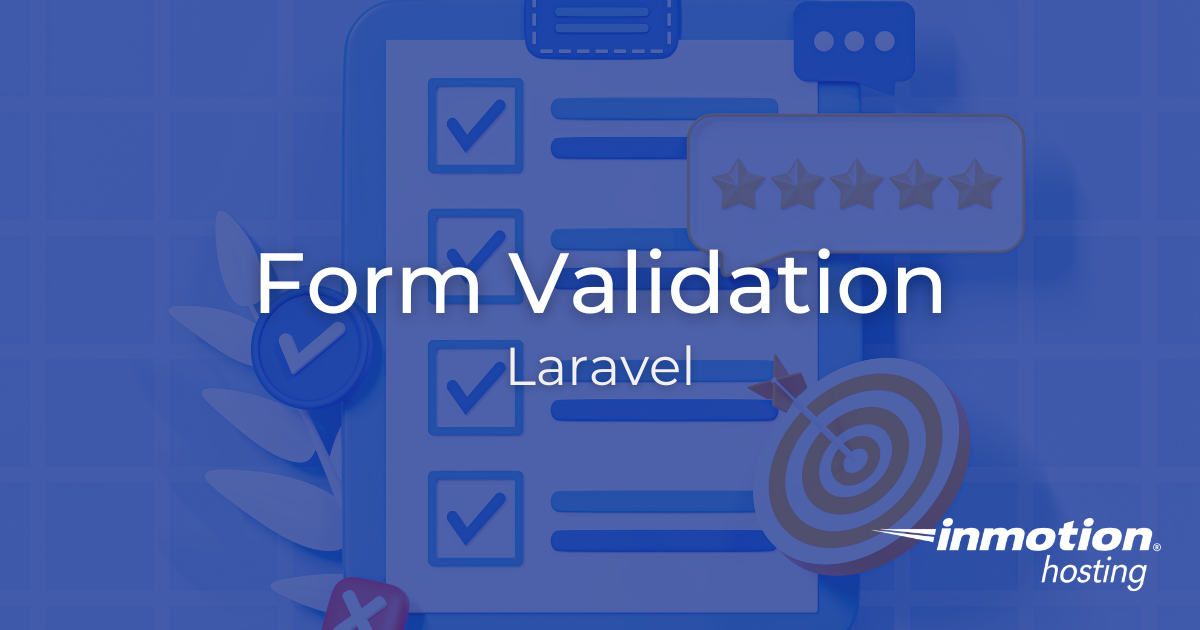PHP 8.4 was released November 21, 2024. As of this writing, you can use PHP 8.4 on cPanel VPS environments and Dedicated servers by enabling the package in EasyApache. PHP 8.4 will be added to shared servers after a brief period of testing by InMotion’s Engineering team. What’s new in PHP 8.4? HTML 5 Compatibility Read More >
Search Results for: http:
Step-by-Step Guide to Installing React (Updated for 2024)
React is a popular JavaScript library for building user interfaces, especially single-page applications where dynamic content updates are essential. This guide will walk you through the updated steps to install React using the latest tools like Vite and Next.js and explain why you should use a framework tailored to your needs. What Is React? React, Read More >
How to Use Controllers in Laravel
Laravel is a powerful PHP framework that offers a clean and expressive syntax for web development. Controllers play a critical role in Laravel by handling the logic of your application, responding to user actions, and returning appropriate responses. In this guide, we’ll explore how to effectively use controllers in Laravel, from creating them to using Read More >
Form Validation in Laravel
Form validation is a critical aspect of web application development. It ensures that the data submitted by users meets specific criteria before processing. Laravel provides a powerful and easy-to-use validation system that simplifies this process. This article will guide you through implementing and customising form validation in Laravel. Introduction to Laravel Form Validation Laravel’s validation Read More >
Understanding CSRF Protection in Laravel
Cross-Site Request Forgery (CSRF) is an attack in which unauthorized commands are transmitted from a user that the web application trusts. Laravel provides robust CSRF protection out of the box to help secure your application from such vulnerabilities. This article will guide you through the basics of CSRF, how Laravel protects against CSRF attacks, and Read More >
Database Seeding in Laravel
Database seeding is a crucial process in web development, allowing developers to populate databases with initial data. This is particularly useful for testing and development environments. Laravel offers a powerful and flexible way to seed databases. In this guide, we will cover everything you need to know about seeding databases in Laravel. Introduction Database seeding Read More >
Creating Laravel Database Model Factories
Database model factories in Laravel provide an efficient and powerful way to insert data for testing and seeding purposes. By leveraging model factories, developers can create realistic data sets quickly and easily by defining a set of default attributes for each of your Eloquent models, enhancing the development and testing processes. This guide will cover Read More >
Mastering Laravel Pagination
Pagination is a critical feature for web applications, enhancing user experience by breaking down large data sets into manageable chunks. Laravel simplifies the implementation of pagination through its built-in paginate() method. This article will guide you through the process of setting up and customizing pagination in Laravel, ensuring a smooth and efficient user experience. Setting Read More >
Debugging Laravel Applications with Laravel Debugbar
Debugging is an essential part of application development, ensuring that software operates efficiently and correctly. For developers working with Laravel, the Laravel Debugbar, developed by Barry vd. Heuvel, is an indispensable tool. It provides a powerful and flexible way to add debugging capabilities directly into your Laravel application. This article shows how you can leverage Read More >
Working with Docker Containers
Docker is now available to install on all VPS and Dedicated Servers from InMotion Hosting, including Platform i, Unmanaged Cloud VPS, Control Web Panel, and cPanel-Managed VPS. Due to the complexity and potential system-level changes required, Docker installations are recommended for experienced users only. Docker allows you to encapsulate your applications within containers, making them portable and easy to Read More >
Understanding Laravel Internals
Laravel simplifies the development of web applications with readable, maintainable code. This guide explores the internal mechanisms of Laravel that power its operations, providing clarity and insights that are beneficial for both new and experienced developers. Service Container (IoC Container) The Laravel Service Container is an implementation of the inversion of control (IoC) principle, which Read More >
Introduction to Laravel Eloquent
Laravel has consistently delivered robust tools for developers, enhancing productivity and simplifying common web development tasks. One of the standout components of Laravel is Eloquent, its Object-Relational Mapping (ORM) system, designed to simplify database interactions using an active record implementation. Prerequisites Before diving into Eloquent, you must have Laravel installed. If you haven’t already completed Read More >
How to Configure the Laravel .env for a Database
Configuring your environment settings is a vital initial step for managing database connections and ensuring your application runs smoothly across different development stages. Laravel uses environment variables stored in a .env file to manage configuration settings, making it easier to modify environment-specific details without altering the codebase. This article will guide you through the process Read More >
Using Laravel Tinker
Laravel Tinker is an invaluable tool for developers using the Laravel framework. As an interactive PHP REPL (Read-Eval-Print Loop) integrated directly into Laravel, Tinker allows developers to interact dynamically with their entire Laravel application. This can range from managing database records to testing service methods in real-time. This article aims to equip developers with the Read More >
Basics of Laravel Migrations
For any web application or website, managing the integrity and consistency of a database schema over time can be a challenge, particularly when working within collaborative team environments or across various deployment stages. Laravel offers a robust feature known as migrations that simplifies this process. Migrations act as version control for your database, enabling developers Read More >
How to Create a Route and View in Laravel
Laravel, a powerful MVC (Model-View-Controller) PHP framework, is designed for developers who need a simple and elegant toolkit to create full-featured web applications. Laravel is known for its expressive routing and views which are fundamental components of any Laravel application. This article guides you through the basics of creating a route and a view in Read More >
A Step-by-Step Guide to Installing Next.js
Next.js, the powerful React framework, has become a go-to choice for developers building modern web applications. If you’re ready to dive into the world of Next.js, follow this step-by-step guide to get it installed on your machine. What you will need: Before we start, make sure you have Node.js and npm (Node Package Manager) installed. Read More >
PHP Artisan – A Comprehensive Guide
PHP Artisan is a robust command-line tool that is pivotal in Laravel web development. Whether you are a seasoned developer or a newcomer to Laravel, comprehending and harnessing the capabilities of PHP Artisan can significantly enhance your web development workflow. This comprehensive guide aims to educate Laravel users on effectively utilizing PHP Artisan in their Read More >
The Ultimate Guide to Optimizing WordPress Performance
In our Ultimate Guide to High Performance WordPress for High Traffic Sites, we will show you how to identify and fix common performance issues with WordPress and the server it’s hosted on. Our guide combines over 20 years of experience of fine-tuning servers, CDNs, and website code to deliver high performance WordPress sites. If you’re Read More >
Laravel Blade Basics
Laravel Blade, Laravel’s native templating engine, stands out for its ability to elegantly integrate PHP with HTML. This synergy simplifies the development of dynamic web interfaces, making Blade a cornerstone of Laravel’s appeal. In this comprehensive guide, we’ll delve into the fundamentals of Blade, equipping you with the knowledge to craft responsive and interactive web Read More >
















